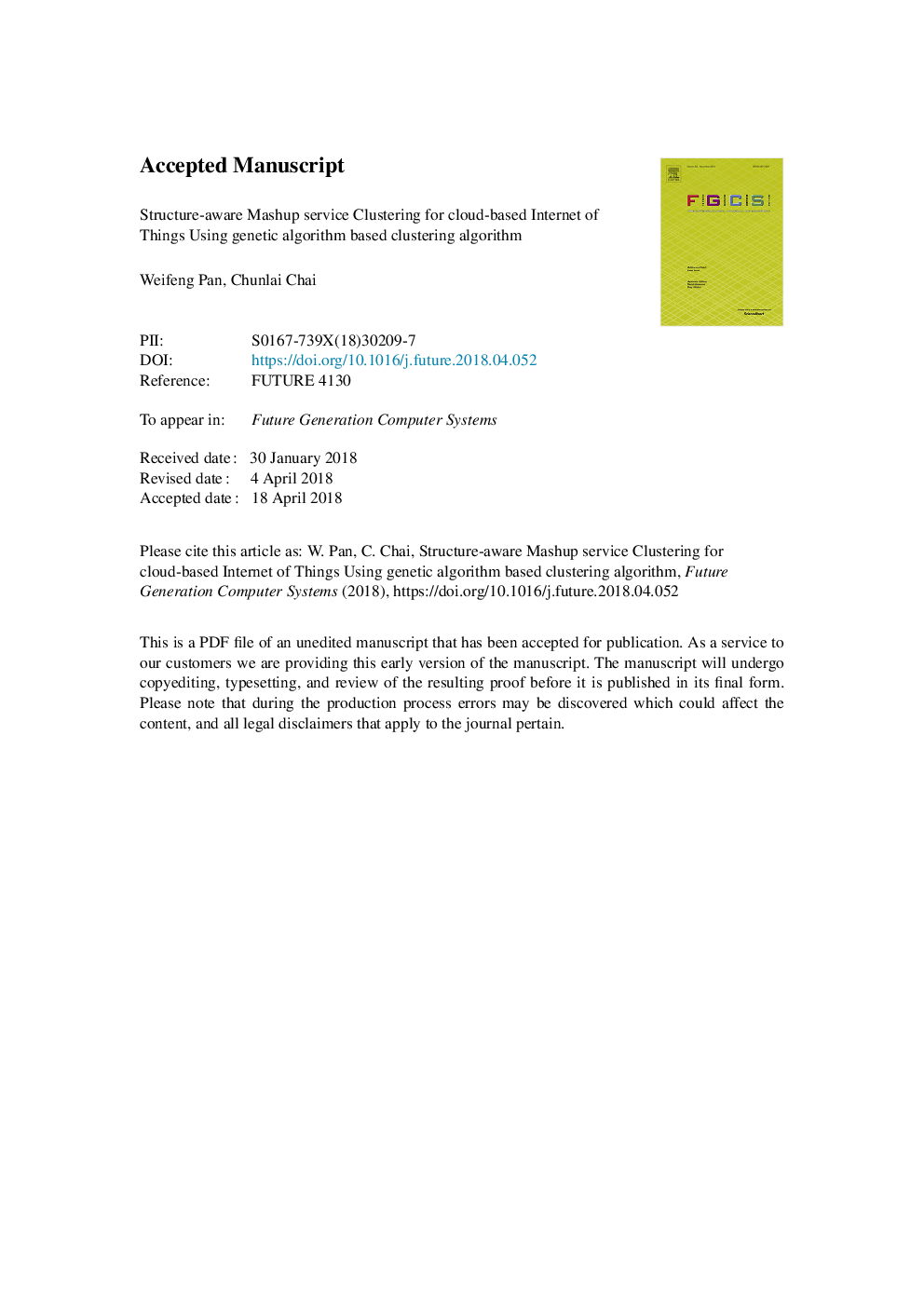| Article ID | Journal | Published Year | Pages | File Type |
|---|---|---|---|---|
| 6872918 | Future Generation Computer Systems | 2018 | 15 Pages |
Abstract
An increasing number of physical objects connected to the Internet makes it possible for smart things to access all kinds of cloud services. Mashup technology has been an effective way to the rapid IoT (Internet of Things) application development. However, the number of Mashup services (IoT applications) being so large makes how to discover the desired IoT applications accurately and efficiently become a problem. Service clustering technology can facilitate service discovery effectively, and many different approaches have been proposed. However, many of them only use semantic similarities to guide clustering operations and need the configuration of the number of clusters. Structural similarities are orthogonal to semantic similarities. But they have never been used in service clustering approaches. In this paper, we propose a novel Mashup service clustering approach based on a structural similarity and a genetic algorithm based clustering algorithm. First, it applies a two-mode graph to describe Mashups, Web APIs, and their relations formally. Second, it applies the SimRank algorithm to quantify the structural similarity between every pair of Mashup services. Finally, it introduces a genetic algorithm based clustering algorithm to organize Mashup services into clusters effectively and determines the number of clusters automatically. Empirical results on a real-world Mashup services data set collected from ProgrammableWeb demonstrate that our approach can cluster Mashup services efficiently without any constraints on the number of clusters, and its performance is better than other Mashup service clustering approaches based on semantic metrics.
Related Topics
Physical Sciences and Engineering
Computer Science
Computational Theory and Mathematics
Authors
Weifeng Pan, Chunlai Chai,
